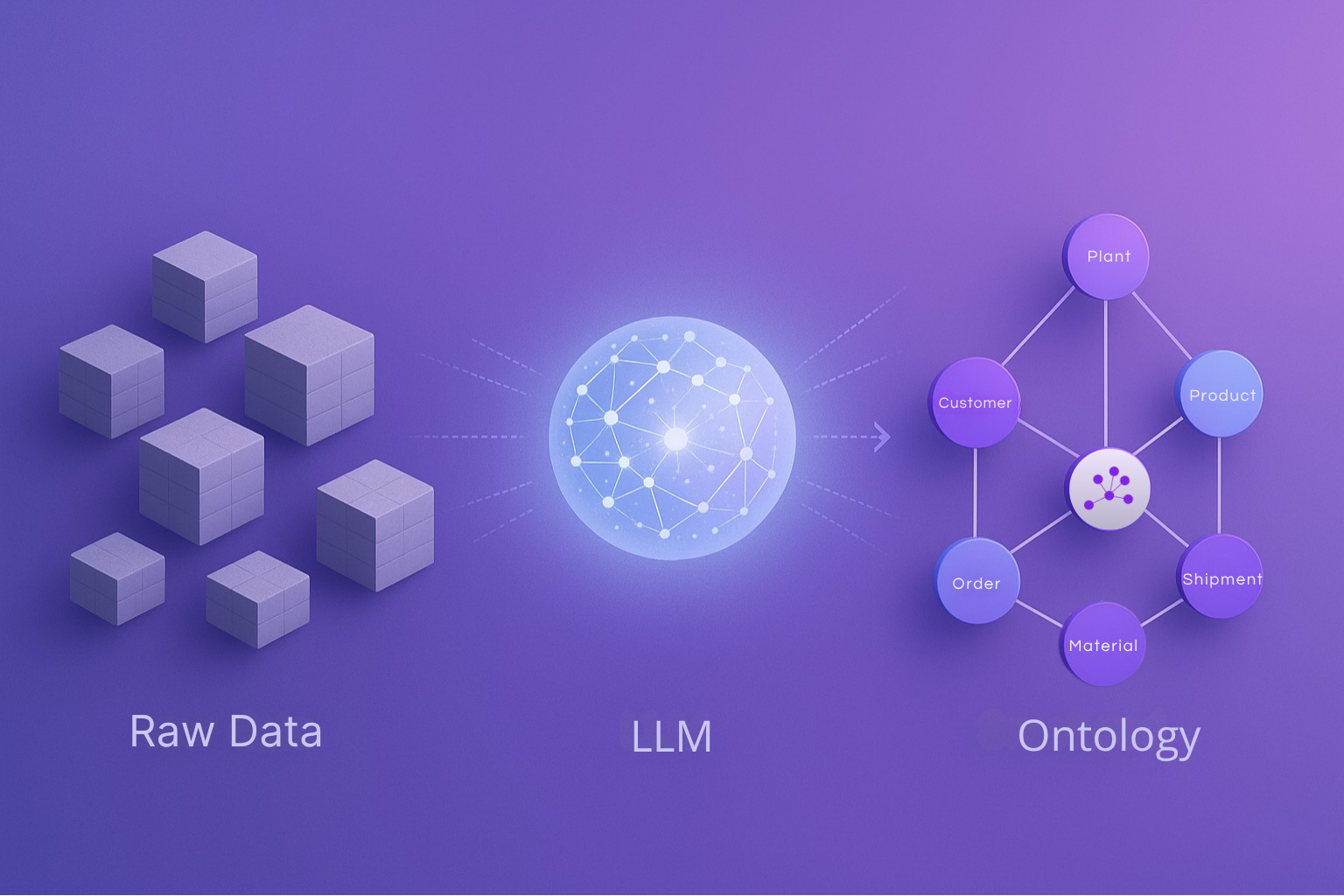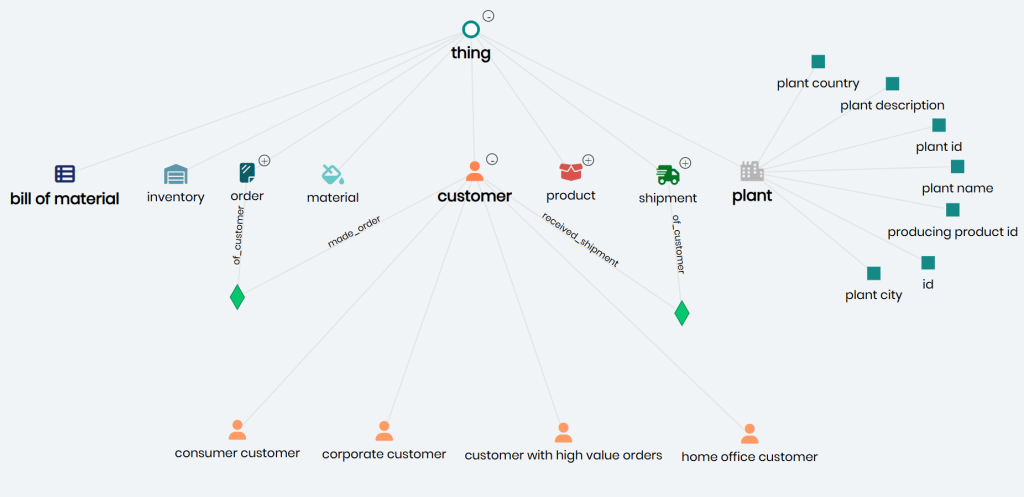
Introduction
GenAI promised a new way to access data, where anyone could ask a question in plain language and receive accurate insight or SQL on demand. But most enterprise pilots hit the same wall. The LLM understands language, not data structure. It does not know what a customer actually is, how orders relate to shipments, or which fields define margin. Without clarity, it guesses.
And guessing is where GenAI fails.
SQL ontologies change this. By modeling concepts, relationships, hierarchies, and measures directly in SQL, they give LLMs the structure they never had. This turns data retrieval from unpredictable to reliable and makes GenAI workflows practical for real teams.
Why GenAI Retrieval of Data Fails in the Enterprise
1. LLMs do not understand schemas
LLMs see the words in a question, but they cannot interpret physical tables, keys, or business intent. Asking “sales by customer segment” requires knowing which table defines a segment, how it connects to customers, and where sales live. The model has none of this knowledge.
2. Business meaning is buried in physical data
Enterprise schemas evolve over years, with inconsistent naming and logic scattered across systems. Meaning is nowhere explicit, leaving the LLM to infer intent.
3. Joins, filters, and logic are guessed
Incorrect joins are one of the top reasons NL2SQL fails. The LLM often merges unrelated tables, creates missing conditions, or drops required filters.
4. Governance is not applied
Access rules, semantic filters, lineage, and metric definitions disappear when LLMs query raw tables, creating inconsistency and compliance risk.
5. BI semantic layers are not enough
Traditional semantic layers rename fields. They do not define entities, inheritance, relationships, or business logic. LLMs need far more structure to reason accurately.
How SQL Ontologies Make GenAI Actually Work
SQL ontologies sit above the physical data and model business meaning directly in SQL. Instead of exposing thousands of ambiguous tables, they provide the LLM with a governed knowledge graph of business concepts, relationships, and measures. This aligns with how LLMs were trained, enabling them to generate accurate SQL, follow correct paths, and apply rules consistently.
The result: the model stops guessing and starts understanding.
What SQL Ontologies Add
SQL ontologies give LLMs a complete, machine-readable representation of meaning. Each business concept includes:
Modeling elements
- Properties
- Relationships
- Measures
- Logic (constraints, rules, filters)
Descriptive metadata
- Primary key
- Entity label
- Inheritance
- Hierarchy level
- Total properties and relationships
Mappings to the underlying SQL source
Additional structure
- Explicit graph relationships instead of inferred join keys
- Hierarchies that reflect how the business actually rolls up data
- Virtualization so data stays live with no movement or duplication
- Multiple semantic views (intrinsic, exhaustive, dereferenced, graph) to support different retrieval needs
This is the structure LLMs need to reason correctly.
How They Improve GenAI Retrieval
1. Ambiguity disappears
The model no longer needs to guess which table defines a customer or whether region is a field or a hierarchy.
2. Join hallucinations drop sharply
Relationships guide the path. The LLM follows the ontology instead of trying to infer join keys.
3. Governance applies automatically
Access rules, row-level filters, constraints, and metric definitions remain intact, even for AI-generated SQL.
4. A single model powers BI, AI, and agents
Dashboards, SQL interfaces, copilots, and RAG systems rely on the same definitions, reducing inconsistency across tools.
5. Deployment becomes predictable
Ontologies can be generated from schemas, ERDs, OWL imports, or top-down business modeling. This accelerates the path from prototype to production.
6. NL2SQL becomes reliable for real workflows
With structure, relationships, and logic in place, the LLM generates SQL that is accurate, explainable, and aligned with business intent.

Real Examples of What Becomes Possible
With SQL ontologies, an LLM can answer real business questions such as:
Show me our highest-margin product categories in North America last quarter
Which customers increased purchases after support interactions in the past 60 days
How many open claims involve policies that include high-risk items
These are not demo questions, they are the everyday analysis leaders rely on. The LLM navigates the ontology, applies the correct business rules, and produces SQL teams can trust.
This is the moment GenAI becomes a dependable tool, not an experiment.
Conclusion
GenAI can reshape how organizations access and understand data, but only if the model is given the structure it needs. SQL ontologies provide that structure by turning raw enterprise schemas into governed business concepts, relationships, hierarchies, and measures that LLMs can reason over.
This dramatically increases the success rate of NL2SQL, retrieval, and AI-agent workflows, helping organizations move from pilots to production-grade GenAI.


